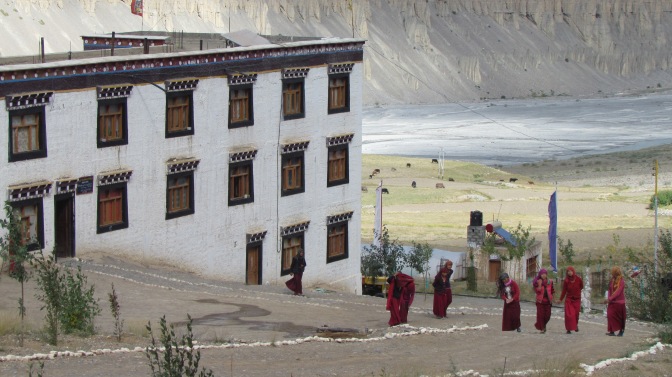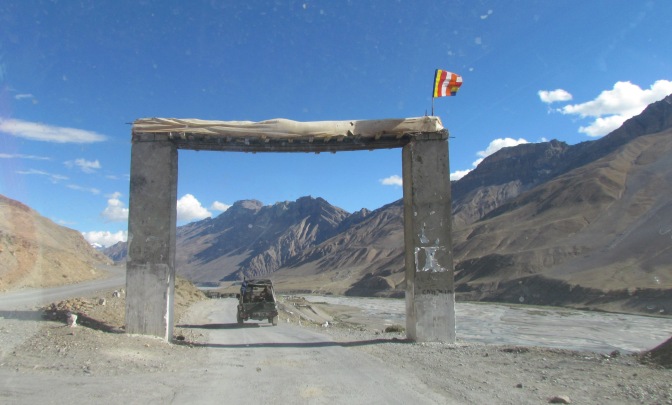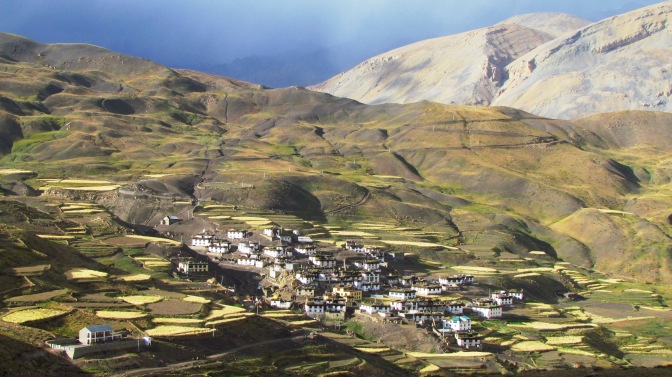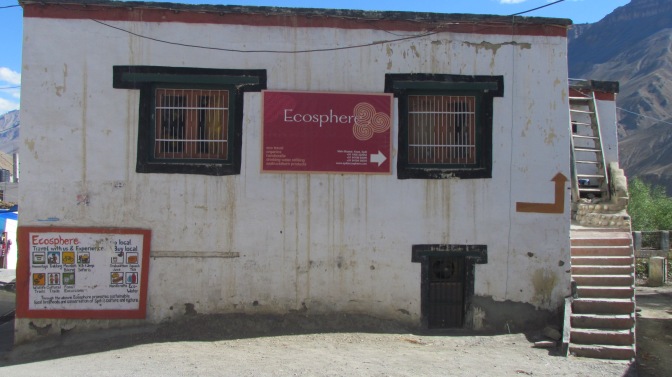Spiti – A Dustland Fairytale
Three weeks after returning to Bombay, I shut myself from the frenzy outside and sit finishing my first story about Spiti. As I try explaining my struggle with words when sending postcards from what is believed to be the world’s highest post office back in Hikkim, the loud door bell interrupts me mid sentence, much to my annoyance. The very next moment, however, I am grinning at a stamped, scribbled and weathered version of the same post card that I am writing about, addressed to my sister. The stories must not stop yet, I believe the universe to be saying. So, here I am again, putting into words the week that was – the week in Himachal’s remotest region – Spiti.
It all began with a chance stumble upon Ecosphere, the social enterprise working for the betterment of the valley, on the internet, and the safari scheduled by them just ten days later . With a dearth of time, money and experience in hand, the heavy rucksacks were packed, and in spite of my skepticism, I found myself driving through uneven roads into the welcoming village of Kaza.
Once inside my hotel room in the commercial capital, after a grueling 12-hour long drive, I cautiously peeped through the window. Everything was normal – two young men sat fixing their bikes, school kids were making their way back home and a woman sat pumping water out of a tube well– nothing I hadn’t seen before, except my view was tinted a deep shade of brown, never without the enormous mountains in the background. The lack of green felt a little odd, I must admit, and I was still catching my breath after the extremely short walk up the village roads. There was no electricity and my phone had lost connectivity hours ago. Slowly, with every careful glance and every realisation, I began the process of acquaintance with the valley.

The residents of Sherab Choeling Nunnery Institute excited to greet one of their fellow nuns traveling with us from Manali
Over the course of a week, as I made my way from the village of Kaza to Tabo to Langza, my surroundings became less usual, and I, only more familiar with them. The hint of civilasation was soon replaced by small patches of cultivated land in some places, and prayer inscribed rock boulders in others.
Our chirpy guide, Anjaan, and driver, Tenzing, kept us (I had another traveler, Jyoti, for company) captivated with their never ending stories. Even though I soon lost track of the number of hills and valleys they had successfully traversed over their lifetime, the details of their journeys remained with me – clear and untainted. Following the course of the Spiti river and driving across villages, commonly made up of ten or fewer families, it wasn’t hard to believe that Anjaan and the others devoted their faith to devis and aatmas, looking up to them when nature created havoc in the extremely susceptible region they called home. Their beliefs co existed at ease with updated knowledge of the on-goings in the rest of the country, the one they were physically detached from for most part of the year – the part of the country that sadly knew very little about the existence of such a unique community like theirs.
I continue to remember the way the extremely kind locals looked after us on freezing nights, offering their unmatched hospitality for warmth. I also continue to remember them toiling all day at work, yet never failing to greet us with “Julley!” (Hello!) and waving at us with a pleasantly plastered smile each time we passed by. These memories make me biased as I go on to talk about them every time I am asked about the trip. But then again, I wouldn’t want to take away from the many speculates that Spiti holds amidst its vast stretch – a monastery dating back to 996 AD, manual rope ways connecting parts of the valley which were so remote that no roads lead to them, fossil rich land and exotic species of wildlife lurking its territory. No amount of research could have prepared me for any of this.
As I now recommend the challenging journey to Spiti, I realise how it let me experience and live a way of life that I never thought I would discover in India. And even though I feel tad bit guilty for being one of those who spill out a beautiful secret to a mass, I do hope you go out there and soak in the uniqueness of the region for yourself. Only to come back feeling more humble and content than you had ever felt before. Take my word for it.
(As written for India Untravelled here.)
| Want to experience the uniqueness of Spiti? Read on.
Getting there: Take a flight to Delhi from any major city.From there, you could take a Shatabdi to Kalka and then a taxi for the two-hour drive on wards to Shimla. From Shimla, the journey to Kaza typically takes 20 hours and can be broken down mid-way at Reckong Peo or Kalpa. This route is ideally open all year round. Alternatively, take an over night bus to Manali that takes 14 hours. From Manali, the journey through two of Himalayas highest passes, Rohtang Pass and Kunzum Pass, to Kaza takes approximately 12 hours. This route is open only from June to October. Arrange your trip through Ecosphere, a social enterprise that organises carbon neutral trips around the valley as a way of benefiting the locals. They arrange transport, local guide as well as accommodation in both hotels and home stays. You could also arrange your trip through India Untravelled. Note: Only BSNL sim cards receive network in a few villages. Acclimatization takes a while so make sure to carry along medicines after consulting a doctor. |




It gave me a vivid image of the place and the people. Very well written.
Amazing ! Spiti has been on my wishlist for a long time now .. lets see when my time comes 🙂
Thanks Shaunak! 🙂 And Purnendu, I think you have plenty time to plan your trip before the roads from Manali open in May-June. It will leave you with such memories and lessons, trust me. Remember to share stories from your trip! 🙂
Next on my bucket list too. So much to see and so little time……..
It’s true! What with each place being so unique and beautiful in its own way. Spiti is a must visit though! 🙂
very well written …
Thanks Divyank!
Pingback: Spellbound in Spiti | Crumbs from your Tale